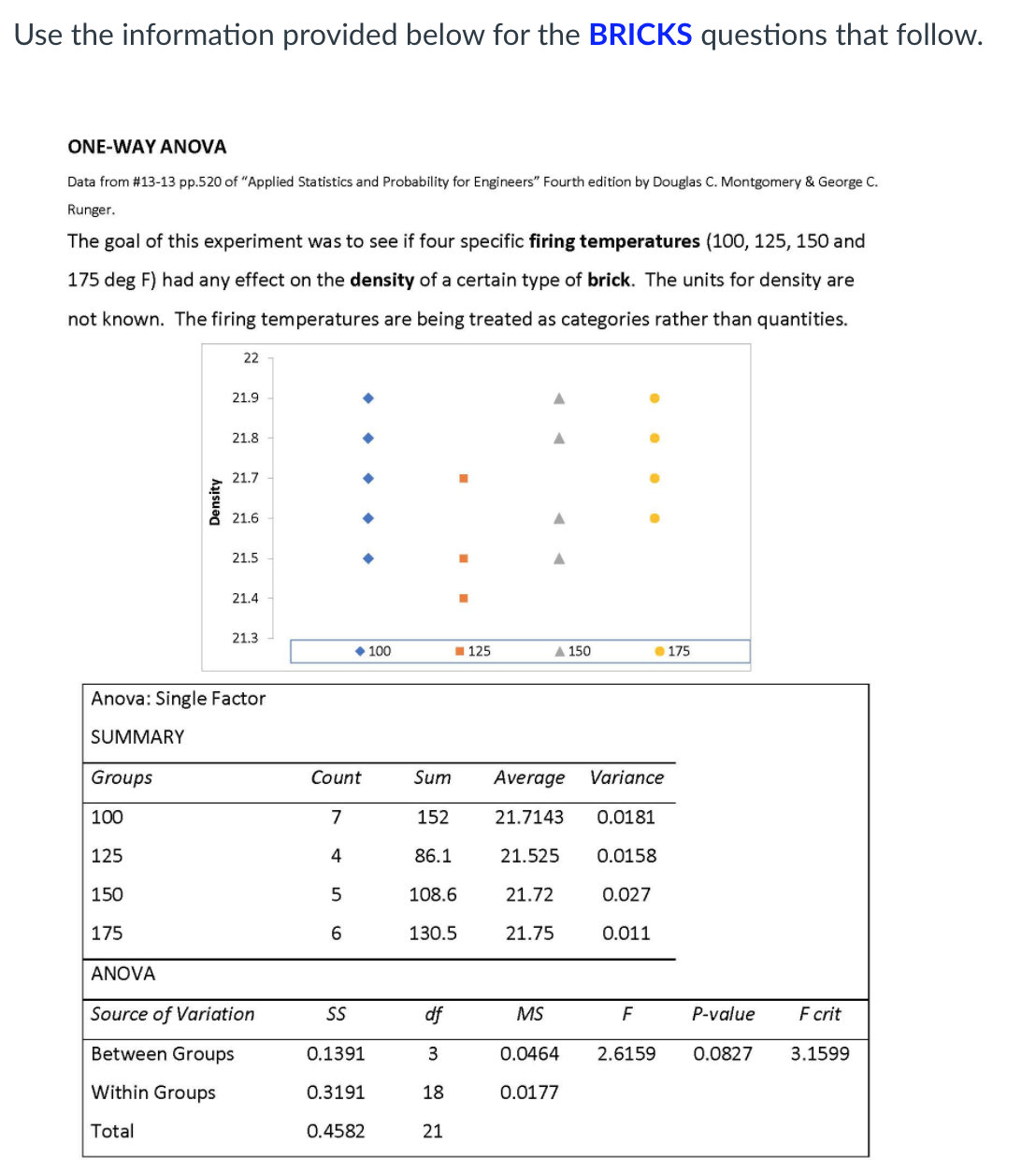Report an appropriate hypothesis test and use a 5% significance level. This question is about the second part of Step 4 of the six-step One-way Anova F-test procedure that was taught in this class. Fill in the blanks appropriately. (ii) Largest sample variance (do not round): Smallest sample variance (do not round): Ratio of largest to smallest (one decimal pl
Report an appropriate hypothesis test and use a 5% significance level. This question is about the second part of Step 4 of the six-step One-way Anova F-test procedure that was taught in this class. Fill in the blanks appropriately. (ii) Largest sample variance (do not round): Smallest sample variance (do not round): Ratio of largest to smallest (one decimal pl
Mathematics For Machine Technology
8th Edition
ISBN:9781337798310
Author:Peterson, John.
Publisher:Peterson, John.
Chapter29: Tolerance, Clearance, And Interference
Section: Chapter Questions
Problem 16A: Spacers are manufactured to the mean dimension and tolerance shown in Figure 29-12. An inspector...
Related questions
Topic Video
Question
Report an appropriate hypothesis test and use a 5% significance level.
This question is about the second part of Step 4 of the six-step One-way Anova F-test procedure that was taught in this class.
Fill in the blanks appropriately.
(ii) Largest sample variance (do not round):
Smallest sample variance (do not round):
Ratio of largest to smallest (one decimal place):
The ratio of the largest to the smallest sample variance is less-than-or-equal-to-four so it is safe to assume that the population variances are approx equal.

Transcribed Image Text:Use the information provided below for the BRICKS questions that follow.
ONE-WAY ANOVA
Data from #13-13 pp.520 of "Applied Statistics and Probability for Engineers" Fourth edition by Douglas C. Montgomery & George C.
Runger.
The goal of this experiment was to see if four specific firing temperatures (100, 125, 150 and
175 deg F) had any effect on the density of a certain type of brick. The units for density are
not known. The firing temperatures are being treated as categories rather than quantities.
22
21.9
21.8
21.7
21.6
21.5
21.4
21.3
• 100
1 125
A 150
• 175
Anova: Single Factor
SUMMARY
Groups
Count
Sum
Average
Variance
100
7
152
21.7143
0.0181
125
4
86.1
21.525
0.0158
150
108.6
21.72
0.027
175
130.5
21.75
0.011
ANOVA
Source of Variation
SS
df
MS
P-value
F crit
Between Groups
0.1391
0.0464
2.6159
0.0827
3.1599
Within Groups
0.3191
18
0.0177
Total
0.4582
21
Density
Expert Solution
This question has been solved!
Explore an expertly crafted, step-by-step solution for a thorough understanding of key concepts.
This is a popular solution!
Trending now
This is a popular solution!
Step by step
Solved in 2 steps

Knowledge Booster
Learn more about
Need a deep-dive on the concept behind this application? Look no further. Learn more about this topic, statistics and related others by exploring similar questions and additional content below.Recommended textbooks for you

Mathematics For Machine Technology
Advanced Math
ISBN:
9781337798310
Author:
Peterson, John.
Publisher:
Cengage Learning,

Mathematics For Machine Technology
Advanced Math
ISBN:
9781337798310
Author:
Peterson, John.
Publisher:
Cengage Learning,